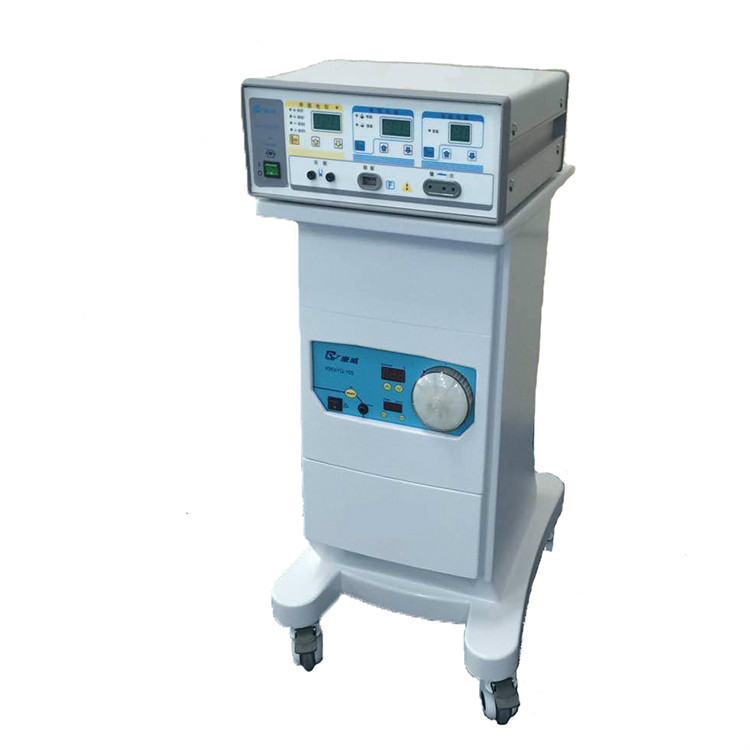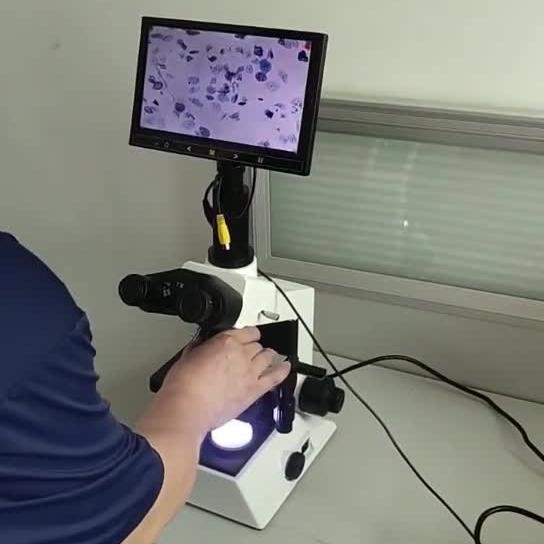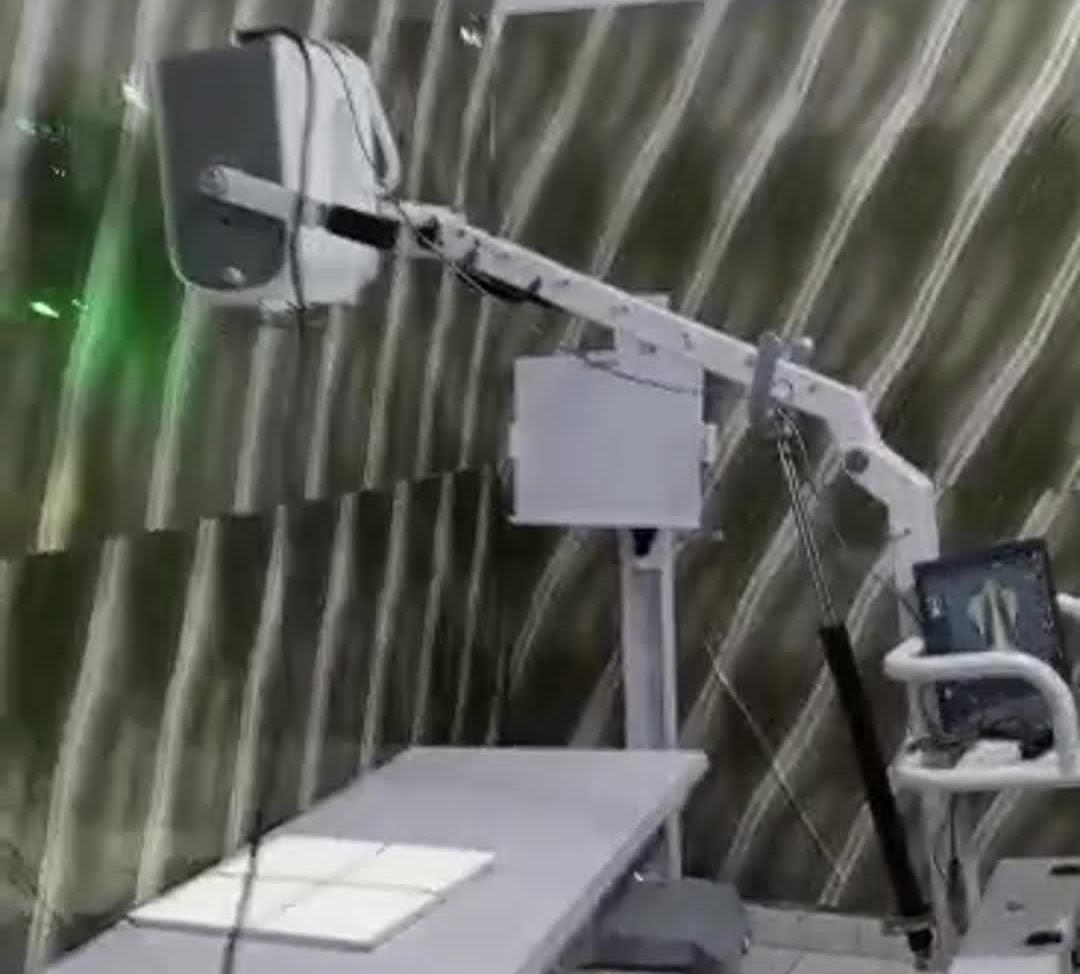Hot Products
YSX500D 50kW DR system set up and put into service in Cambodia.
YSENMED YSX500D 50kW digital x-ray system has been successfully set up and put into service in a hospital in Cambodia.
YSX056-PE serving as a vehicle-mounted x-ray in the Philippines
YSX056-PE 5.6kW portable x-ray unit has been adapted to fit on a truck, to provide mobile x-ray examination service for remote communities in the Philippines.
X Ray Machine To Zimbabwe
x ray machine, 50KW x ray machine
Microscope To Malawi
Achromatic objectives: 4X、10X、40X(S), 100X(S、Oil) Wide field eyepiece: WF10X(WF16X for option) Eyepiece head: Sliding binocular head inclined at 45° Stage: Double layer mechanical stage size 140X140mm, moving range 75X45mm Focusing: Coaxial coarse and
Mastering Surgical Precision: Unleashing the Potential of the LEEP Knife's Seven Working Modes
Views : 1881
Update time : 2024-03-22 16:02:00
In the realm of surgical innovation, efficiency is not just a desire; it's a necessity. Surgeons constantly seek ways to optimize their procedures, ensuring not only swift operations but also superior patient outcomes. In this quest for excellence, one instrument has emerged as a game-changer: the LEEP (Loop Electrosurgical Excision Procedure) knife. With its seven versatile working modes, the LEEP knife has become a cornerstone in the arsenal of modern surgical tools, significantly enhancing surgical efficiency and patient care.

Understanding the LEEP Knife: A Brief Overview
Before delving into its myriad capabilities, let's take a moment to understand what the LEEP knife is and how it functions. Developed for use in gynecological procedures, particularly in the treatment of cervical dysplasia and other related conditions, the LEEP knife operates on the principles of electrosurgery. By delivering high-frequency electrical current through a looped wire, it excises targeted tissue precisely and efficiently, minimizing bleeding and promoting rapid healing.
The Seven Working Modes Unveiled
Now, let's explore the heart of the matter: the seven working modes that make the LEEP knife a true marvel of surgical technology.
1. Cut Mode: The bread and butter of the LEEP knife, Cut Mode enables surgeons to make precise incisions with ease. By adjusting the power settings, they can tailor the depth and extent of the cut to suit the specific requirements of each procedure.
2. Coagulation Mode: Bleeding during surgery can be a significant obstacle, but with Coagulation Mode, it's a challenge easily overcome. By cauterizing blood vessels as it cuts, the LEEP knife minimizes bleeding, providing surgeons with a clear field of vision and uninterrupted workflow.
3. Blend Mode: Sometimes, a balance between cutting and coagulation is needed. Enter Blend Mode, which offers the best of both worlds. By blending cutting and coagulation currents, this mode allows for efficient tissue removal while simultaneously controlling bleeding.
4. Desiccate Mode: In procedures where precise tissue destruction is required, Desiccate Mode shines. By delivering a high-frequency current with minimal lateral thermal spread, it effectively desiccates and removes targeted tissue without causing unnecessary damage to surrounding structures.
5. Fulgurate Mode: For superficial coagulation and hemostasis, Fulgurate Mode is the go-to option. By emitting a spark-like current, it swiftly coagulates small blood vessels and achieves hemostasis, ensuring a clean surgical field and optimal visibility.
6. Bipolar Mode: Unlike the other modes, which rely on a single electrode, Bipolar Mode utilizes two closely spaced electrodes. This configuration allows for precise control of the electrical current, making it ideal for delicate procedures where tissue damage must be minimized.
7. Micro Mode: Last but not least, Micro Mode offers unparalleled precision for fine-detail work. Whether it's delicate tissue dissection or intricate sculpting, this mode delivers precise, controlled energy, enabling surgeons to achieve exceptional results with confidence.
The Impact on Surgical Efficiency and Patient Outcomes
The versatility afforded by the LEEP knife's seven working modes translates directly into tangible benefits for both surgeons and patients alike.
First and foremost, these modes streamline surgical procedures, reducing operating times and minimizing the risk of complications. Surgeons can work more efficiently, confident in their ability to achieve precise results with minimal disruption.
Additionally, the LEEP knife's ability to minimize bleeding is a game-changer. By reducing intraoperative blood loss, it lessens the need for transfusions and lowers the risk of postoperative complications such as infection and delayed wound healing. This, in turn, leads to faster recovery times and improved overall outcomes for patients.
Furthermore, the precision offered by the LEEP knife enhances the surgeon's ability to spare healthy tissue, particularly in delicate areas where preservation is paramount. This not only improves cosmetic outcomes but also reduces the risk of functional impairment and long-term complications.
Conclusion: Revolutionizing Surgical Excellence, One Mode at a Time
In conclusion, the LEEP knife stands as a testament to the relentless pursuit of excellence in surgical innovation. With its seven working modes, it empowers surgeons to achieve unparalleled precision, efficiency, and patient outcomes. As technology continues to advance, it's exciting to imagine the possibilities that lie ahead, knowing that tools like the LEEP knife will continue to pave the way for a brighter future in surgical care.
FAQs:
How does the LEEP knife differ from traditional surgical tools?
The LEEP knife differs from traditional surgical tools in its utilization of high-frequency electrical currents for precise tissue excision. Unlike conventional scalpels, it offers multiple working modes tailored to specific surgical needs, such as cutting, coagulation, and desiccation.
Is the LEEP knife suitable for all types of surgical procedures?
While the LEEP knife is primarily designed for gynecological procedures, particularly those involving the cervix, it can also be used in other surgical specialties where precise tissue excision and hemostasis are required. Surgeons may adapt its use to suit a variety of clinical scenarios, ensuring optimal outcomes for patients.
What safety measures are in place to prevent complications during LEEP knife procedures?
Safety is paramount during LEEP knife procedures, and several measures are in place to minimize the risk of complications. Surgeons undergo specialized training to ensure proficiency in the instrument's operation, while stringent protocols govern its use in clinical settings. Additionally, advanced monitoring technologies help surgeons maintain optimal tissue integrity and patient safety throughout the procedure.
Can the LEEP knife be used in outpatient settings?
Yes, the LEEP knife is well-suited for use in outpatient settings, offering a minimally invasive alternative to traditional surgical approaches. Its ability to achieve precise tissue excision and hemostasis makes it ideal for procedures performed outside of the traditional operating room environment, enhancing patient convenience and reducing healthcare costs.
What are the potential benefits of using the LEEP knife in surgical practice?
The use of the LEEP knife in surgical practice offers numerous potential benefits for both patients and surgeons. These include shorter operating times, reduced blood loss, enhanced precision, and improved patient outcomes. By harnessing the power of its seven working modes, surgeons can achieve optimal results while minimizing the risk of complications, ultimately transforming the landscape of modern surgical care.

Understanding the LEEP Knife: A Brief Overview
Before delving into its myriad capabilities, let's take a moment to understand what the LEEP knife is and how it functions. Developed for use in gynecological procedures, particularly in the treatment of cervical dysplasia and other related conditions, the LEEP knife operates on the principles of electrosurgery. By delivering high-frequency electrical current through a looped wire, it excises targeted tissue precisely and efficiently, minimizing bleeding and promoting rapid healing.
The Seven Working Modes Unveiled
Now, let's explore the heart of the matter: the seven working modes that make the LEEP knife a true marvel of surgical technology.
1. Cut Mode: The bread and butter of the LEEP knife, Cut Mode enables surgeons to make precise incisions with ease. By adjusting the power settings, they can tailor the depth and extent of the cut to suit the specific requirements of each procedure.
2. Coagulation Mode: Bleeding during surgery can be a significant obstacle, but with Coagulation Mode, it's a challenge easily overcome. By cauterizing blood vessels as it cuts, the LEEP knife minimizes bleeding, providing surgeons with a clear field of vision and uninterrupted workflow.
3. Blend Mode: Sometimes, a balance between cutting and coagulation is needed. Enter Blend Mode, which offers the best of both worlds. By blending cutting and coagulation currents, this mode allows for efficient tissue removal while simultaneously controlling bleeding.
4. Desiccate Mode: In procedures where precise tissue destruction is required, Desiccate Mode shines. By delivering a high-frequency current with minimal lateral thermal spread, it effectively desiccates and removes targeted tissue without causing unnecessary damage to surrounding structures.
5. Fulgurate Mode: For superficial coagulation and hemostasis, Fulgurate Mode is the go-to option. By emitting a spark-like current, it swiftly coagulates small blood vessels and achieves hemostasis, ensuring a clean surgical field and optimal visibility.
6. Bipolar Mode: Unlike the other modes, which rely on a single electrode, Bipolar Mode utilizes two closely spaced electrodes. This configuration allows for precise control of the electrical current, making it ideal for delicate procedures where tissue damage must be minimized.
7. Micro Mode: Last but not least, Micro Mode offers unparalleled precision for fine-detail work. Whether it's delicate tissue dissection or intricate sculpting, this mode delivers precise, controlled energy, enabling surgeons to achieve exceptional results with confidence.
The Impact on Surgical Efficiency and Patient Outcomes
The versatility afforded by the LEEP knife's seven working modes translates directly into tangible benefits for both surgeons and patients alike.
First and foremost, these modes streamline surgical procedures, reducing operating times and minimizing the risk of complications. Surgeons can work more efficiently, confident in their ability to achieve precise results with minimal disruption.
Additionally, the LEEP knife's ability to minimize bleeding is a game-changer. By reducing intraoperative blood loss, it lessens the need for transfusions and lowers the risk of postoperative complications such as infection and delayed wound healing. This, in turn, leads to faster recovery times and improved overall outcomes for patients.
Furthermore, the precision offered by the LEEP knife enhances the surgeon's ability to spare healthy tissue, particularly in delicate areas where preservation is paramount. This not only improves cosmetic outcomes but also reduces the risk of functional impairment and long-term complications.
Conclusion: Revolutionizing Surgical Excellence, One Mode at a Time
In conclusion, the LEEP knife stands as a testament to the relentless pursuit of excellence in surgical innovation. With its seven working modes, it empowers surgeons to achieve unparalleled precision, efficiency, and patient outcomes. As technology continues to advance, it's exciting to imagine the possibilities that lie ahead, knowing that tools like the LEEP knife will continue to pave the way for a brighter future in surgical care.
FAQs:
How does the LEEP knife differ from traditional surgical tools?
The LEEP knife differs from traditional surgical tools in its utilization of high-frequency electrical currents for precise tissue excision. Unlike conventional scalpels, it offers multiple working modes tailored to specific surgical needs, such as cutting, coagulation, and desiccation.
Is the LEEP knife suitable for all types of surgical procedures?
While the LEEP knife is primarily designed for gynecological procedures, particularly those involving the cervix, it can also be used in other surgical specialties where precise tissue excision and hemostasis are required. Surgeons may adapt its use to suit a variety of clinical scenarios, ensuring optimal outcomes for patients.
What safety measures are in place to prevent complications during LEEP knife procedures?
Safety is paramount during LEEP knife procedures, and several measures are in place to minimize the risk of complications. Surgeons undergo specialized training to ensure proficiency in the instrument's operation, while stringent protocols govern its use in clinical settings. Additionally, advanced monitoring technologies help surgeons maintain optimal tissue integrity and patient safety throughout the procedure.
Can the LEEP knife be used in outpatient settings?
Yes, the LEEP knife is well-suited for use in outpatient settings, offering a minimally invasive alternative to traditional surgical approaches. Its ability to achieve precise tissue excision and hemostasis makes it ideal for procedures performed outside of the traditional operating room environment, enhancing patient convenience and reducing healthcare costs.
What are the potential benefits of using the LEEP knife in surgical practice?
The use of the LEEP knife in surgical practice offers numerous potential benefits for both patients and surgeons. These include shorter operating times, reduced blood loss, enhanced precision, and improved patient outcomes. By harnessing the power of its seven working modes, surgeons can achieve optimal results while minimizing the risk of complications, ultimately transforming the landscape of modern surgical care.
Related News
Read More >>
 Introduction video of YSENMED YSXWJ-BX301B Digital Biological Microscope.
Introduction video of YSENMED YSXWJ-BX301B Digital Biological Microscope.
Apr .01.2025
Here we share the introduction video of YSENMED YSXWJ-BX301B Digital Biological Microscope.
 YSDR-VET320 veterinary DR & YSB-DU10V color ultrasound serving well in Kiram Veterinary Surgery in Uganda
YSDR-VET320 veterinary DR & YSB-DU10V color ultrasound serving well in Kiram Veterinary Surgery in Uganda
Mar .31.2025
Kiram Veterinary Surgery in Uganda shares the clear images they have got from YSDR-VET320 veterinary digital x-ray system and YSB-DU10V vet color ultrasound machine.
 YSENMED YSFPD-R1012C mammo flat panel detector introduced and set up in a hospital in Senegal
YSENMED YSFPD-R1012C mammo flat panel detector introduced and set up in a hospital in Senegal
Mar .30.2025
Senegalese hospital has upgraded its analog mammography x-ray system with YSFPD-R1012C mammo flat panel detector, and the images come out clear.
 YSX-mDR5A 5.3kW mobile DR system working fine in a clinic in Gambia
YSX-mDR5A 5.3kW mobile DR system working fine in a clinic in Gambia
Mar .29.2025
YSENMED YSX-mDR5A 5.3kW mobile digital x-ray unit is working well in a clinic in Gambia.



